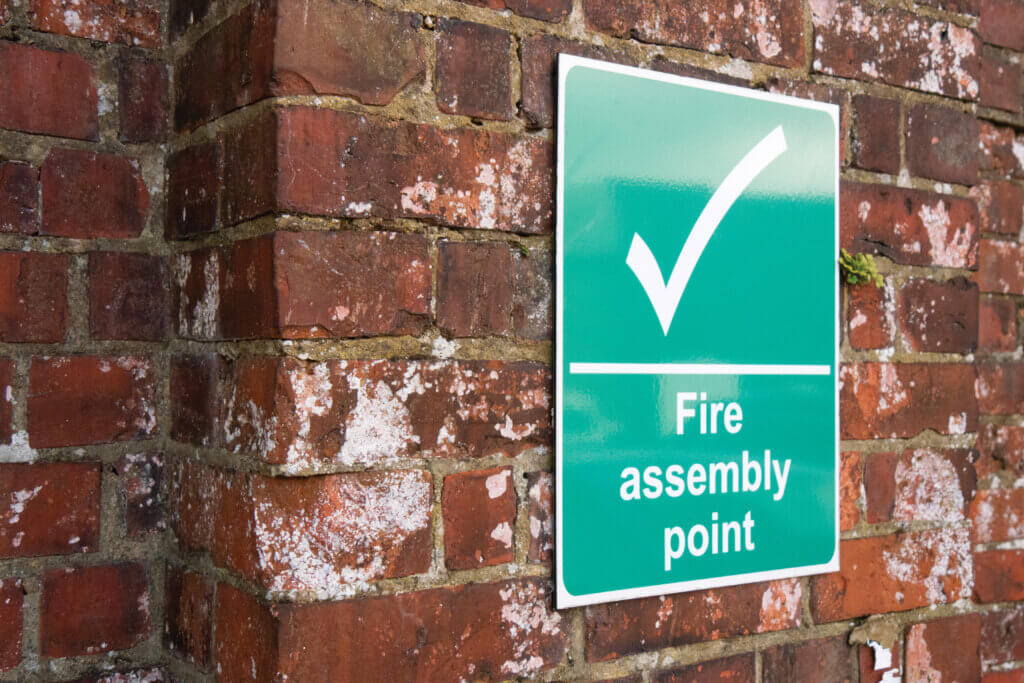When looking at fire safety compliance for commercial properties and communal areas of flats you have to start with getting your Fire Risk Assessment completed by a competent person.
Fire safety compliance requires a competent person
Competence is measured in many ways and we always advise clients to carry out due diligence with regards to the assessors competency, this includes:
- Experience
- Knowledge
- Training
- Qualifications
- Insurance
- Third-Party Accreditation
Fire Risk Assessment
Getting the Fire Risk Assessment completed is only the start of compliance as their is a good chance that some actions will come out of the assessment which need to be actioned. This is down to you not the assessor to action. Too many people get the assessment done and stick it on a shelf without looking at the actions!
What would a fire risk assessor want to see?
A thorough fire risk assessment is an integral part of maintaining fire safety compliance. An assessor will expect to see a comprehensive array of evidence, suggesting robust management of fire safety risks.
- Installation Certificates or Electrical Condition Reports – Validators of fixed wiring safety; required typically every five years.
- PAT Records – Portable Appliance Testing details, frequency is based on risk assessment.
- Air Conditioning and Gas Appliances – evidence of competent servicing and inspection by a qualified person, such as a Gas Safe Engineer.
- Lightning Protection – Only if deemed necessary through risk consideration, involving the structure’s location and environment.
- Anti-arson Measures – Could involve managed waste storage or the implementation of security systems like CCTV.
- Safety Signage – Encompassing directional indicators and instructional notices for fire action and call points.
- Policy and arrangements – fire safety arrangements documented and keep up-todate.
- Fire Alarm sounder checks – conducted weekly to ensure functionality.
- Maintenance Checks – Inspection and testing regimes for smoke ventilation systems and emergency lighting should be regularly performed.
- Staff Training – All personnel should receive fire awareness education, while designated fire wardens are trained in evacuation procedures and equipment operation.
- Fire Warden Training – The role of fire warden, evacuation. drills, procedures, use of extinguisher.
- Regular evacuation drills – Regular practice sessions to ensure efficiency and preparedness in an emergency.
- Resident Information – Clear guidelines provided on procedures and the correct use of fire doors, and location of assembly points.
- Egress Integrity – Regular checks to guarantee escape routes, assembly points, and fire doors are fully operational.

A fire risk assessment is not a one-time event; it must be revisited to reflect any changes in the premises or its use. The responsibility to act upon the assessment’s findings lies with the premises management, not with the assessor. Proper attention to follow-up actions is crucial for compliance and overall safety.
Fire Risk Assessor qualifications
Fire Risk Assessors are required to have extensive training and education. Complisafe Fire Risk Assessors have studied and qualified fire risk assessment and management via the Fire Services College, Nebosh Fire and bespoke courses such as BS9999 and ADB application, Fire Door Diploma (FDIS) and hold various membership levels to the Institute of Fire Safety Managers and Institute of Fire Engineers.
Contact Complisafe today
Contact us by phone 0333 577 2700 or fill in our contact form to get a call back to discuss how we can help you with your fire risk assessment.
